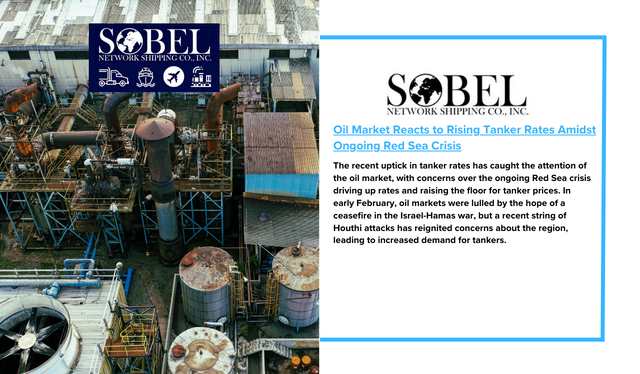The recent uptick in tanker rates has caught the attention of the oil market, with concerns over the ongoing Red Sea crisis driving up rates and raising the floor for tanker prices. In early February, oil markets were lulled by the hope of a ceasefire in the Israel-Hamas war, but a recent string of Houthi attacks has reignited concerns about the region, leading to increased demand for tankers.
The latest attack, claimed by Iran-aligned Houthis, targeted the oil tanker M/T Pollux, which was bound for India. Although no injuries were reported, this and other recent attacks have led major maritime insurer Steamship Mutual to issue an exclusion for all war risk claims in the Indian Ocean, Gulf of Aden, and Southern Red Sea.
This development has significant implications for the oil market, as any new insurance issued for Red Sea routes could impact oil prices by $1 or more per barrel. The alternative of rerouting around Africa’s Cape of Good Hope is not a feasible option for many tankers, as it would result in higher operational costs and vessel utilization.
Despite the challenges, some tankers have persisted in navigating the Red Sea, with arrivals of crude tankers currently at 50% to 60% of their levels in the first half of December, according to data from Clarksons. This has led to a surge in demand for tankers, with the average rate for a Very Large Crude Carrier (VLCC) going from the Middle East to China reaching three-month highs at $66,600 per day. This is a significant increase from the average rate of $41,000 per day seen in the first quarter of this year and a massive jump from the meager $8,700 per day in the third quarter of last year.
While the growth in tanker rates has been impressive, it is not unprecedented. In 2019, a series of attacks in the Middle East and U.S. sanctions on Chinese tanker owner Cosco caused rates to spike from $25,000 per day to over $150,000 per day over a six-month period.
Bank of America predicts that VLCC rates will hold between $40,000 and $50,000 per day in March before dropping to $35,000 to $40,000 over the second quarter. However, this forecast may be affected by rising oil demand, which could sustain tanker rates at current highs. Oil prices have been mostly unaffected by developments in the Red Sea so far, as concerns about weak fundamentals and the threat of a recession continue to outweigh geopolitical risks. In late January, prices remained steady even after a Houthi strike on a product tanker.
Some analysts argue that the current pricing targets are skewed by seasonal weakness, with January typically reporting a net inventory build. However, this year’s build is much lower compared to previous years, and February is expected to see a significant deficit that could shock markets back into bullishness.
But it remains uncertain who will rush to rebalance this deficit. U.S. exports of crude oil have already increased by 21.6% compared to last year, and domestic producers predict that the rate of output growth will slow down in 2024 after a strong 2023. Additionally, Saudi Arabia has canceled plans to expand its oil production capacity, partly due to dissatisfaction with low prices and also to withhold supply for future domestic demand.
In the meantime, the U.S. has imposed sanctions on four entities for violating the G7’s price cap on Russian crude, as part of the ongoing crackdown on Russia’s shadow fleet. This move could further spur demand for legal tankers, with a senior official from the U.K.’s price cap enforcement agency stating that the goal is to “force volumes back into the G7 fleet.”
Overall, while the current growth in tanker rates may be temporary, it would not be surprising if these gains were sustained over the long term. This could have significant implications for the oil market, as well as for the global economy. As the Red Sea crisis continues to unfold, the demand for tankers is likely to remain high, driving up rates and impacting oil prices.


